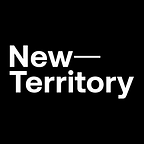The new Urban Mobility — and how the industry should respond
Cities, brands and individuals are re-evaluating the definition of urban mobility. It’s no longer about a ‘one size fits all’ approach. Traditional singular solutions are evolving into more sustainable, practical, meaningful approaches fit for specific purposes at specific times. Pragmatic on the one hand, more experientially rich on the other.
Mobility was changing before COVID, with ride-sharing and EVs presenting urban dwellers with a brave new world of transport and a new landscape of choice and freedom that opened a new idea of what luxury might be in urban mobility and automotive.
The seismic shifts the pandemic has brought about in how we choose to live our lives, our concept of the work, and a renewed importance on the places we live will accelerate these changes in how we travel around our cities and beyond in the longer-term.
A new breed of innovators in the mobility space understand this. They fundamentally know that they have a responsibility to develop flexible solutions and products and services in line with these new emerging customer needs, but they also know that they have a responsibility to help define communities and places with the mobility solutions they create.
This means aligning mobility products to bigger ideas of people and place. It means exploiting different opportunities for what automotive has always promised but is now struggling to truly deliver — space, time and freedom. It feels now that just as the wider choices we have across mobility have fractured into small, medium, and large, fast and slow or practical vs. experiential — the same could now be true for automotive.
New mindsets, different ownership models and more agile manufacturing mean that we can focus on nuanced rather than one-size-fits-all experiences. We can do this through service models and digital experiences but also now by shaping physical space around more personal qualities — crafting vehicles in ways that are closer to how we furnish our homes.
To achieve this, economies of scale in particular — the traditional driving force of the automotive industry — will need to give way to new supply chains focused on modality, modularity and customization. This will support the co-creation of transport solutions and vehicle typologies with governments, an ecosystem of brand suppliers and end-users that are more relevant to people’s real, emerging transport needs.
In response, established OEMs need to rethink their entire way of working and proposition so they don’t fall from grace like their once great equivalents in the telco space like Nokia and Blackberry, who failed to keep pace with changes in their sector.
They urgently need to think like the new start-ups in the space, who see themselves as much as city planners collaborating with local governments, as product designers. As responding to different ideas of luxury in space, time and freedom.
This is a huge opportunity, which if embraced collaboratively and openly, will benefit the established players, the new innovators and the cities and communities they serve.
Author: Hugo Jamson, Creative Director at NewTerritory.
